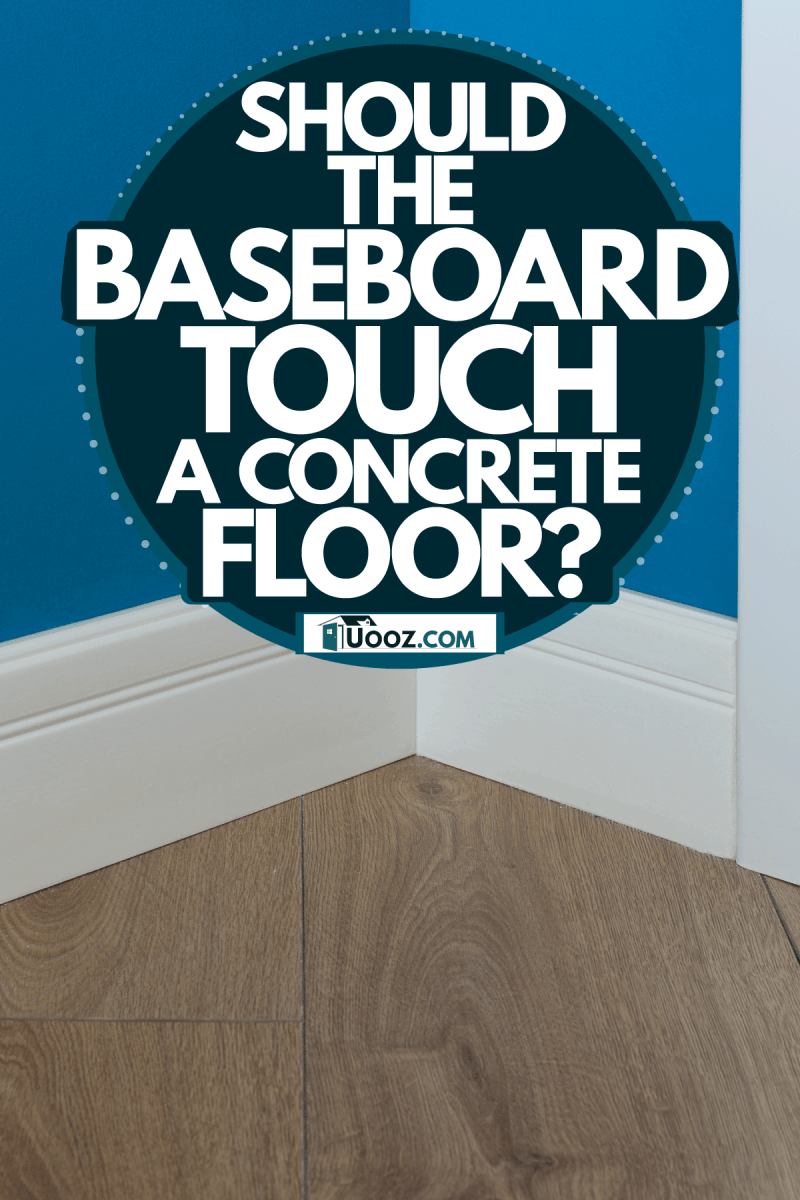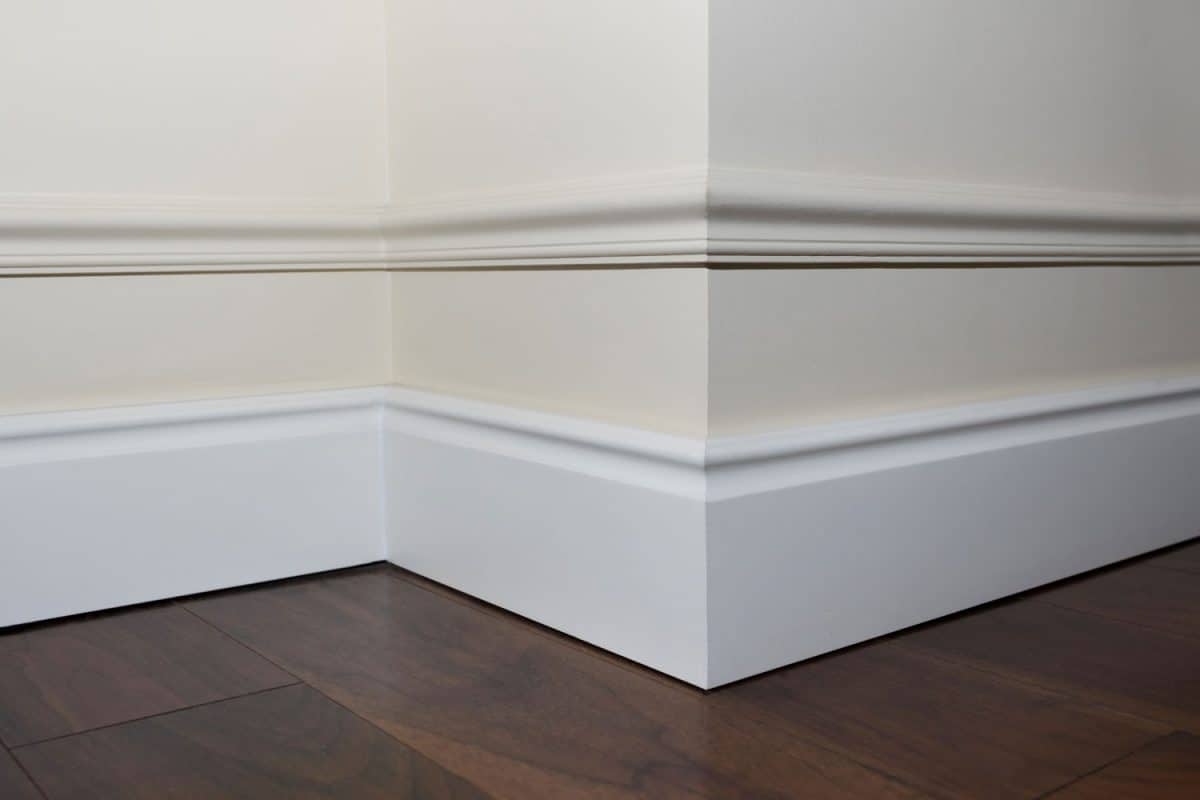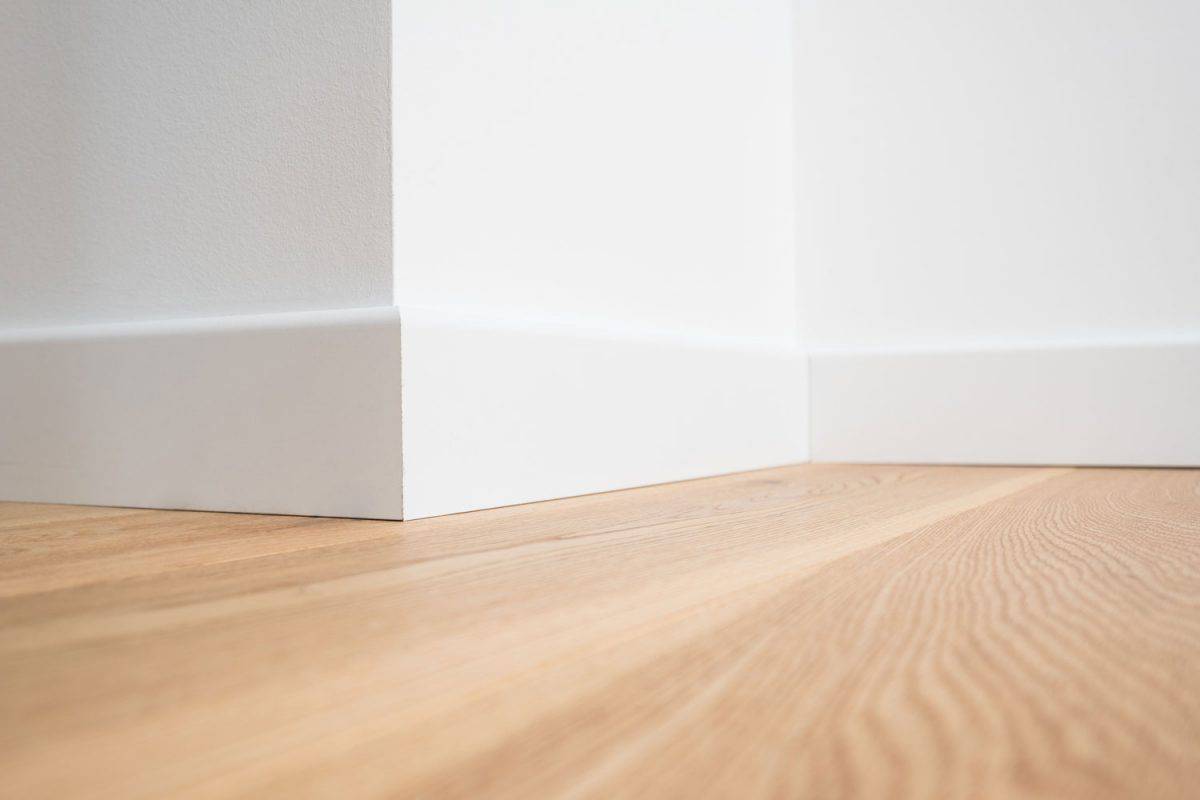Baseboards often go unnoticed, but they can be a useful part of any room. They are the extra trimming that sits at the foot of the wall, guarding it against damage and adding more personality. But baseboards are typically wooden, so you’re probably wondering if they should touch a concrete floor. For your convenience, we have brought you the answer.
It is never a good idea for your baseboard to touch a concrete floor or any other kind of floor. Instead, you should install the baseboard an inch above the floor. This will ensure that you have enough room for both the flooring and any underlayment. For example, tack strips or an underlay like carpet padding can raise the level of the floor. Baseboards are installed directly into the walls instead of the floor.
Exposed concrete floors aren’t found in typical living spaces. Instead, they show up in garages or basements, which need stability underground. But any room could use some baseboards. Keep reading to learn how to properly install baseboards, their relationship with concrete, and if they should go in before the flooring.

Which goes first: baseboards or flooring?
Before you begin installing anything, it’s important to know how baseboards work. Fortunately, the order of the installation doesn’t necessarily matter. The primary goal is to ensure that the floor is going to have enough room. It is much more expensive and difficult to install an entire floor than to add the baseboard trimming across the perimeter.
However, this also means that you should likely prioritize the floor. If you cannot find a way to coordinate with the professionals you’ve hired, then you can’t be certain the baseboards will be high enough. This is why most specialists will prefer to install the floor before the baseboards. There is no guesswork involved.
Also, baseboards can be used to help keep a carpet flush to the underlay. You are less likely to have the edges of your carpeting get pulled off. Baseboards can also be installed after carpets in order to hide the edges. While hardwood floors would blend right in, carpeting would certainly be more noticeable. You can read this post to learn if carpet or baseboards should be installed first.
How do I measure for a baseboard trim?
Before you actually attach any baseboard trim to your walls, you will need to do some measuring first. This will definitely require a good amount of measuring tape.
Click here to see this measuring tape on Amazon.
First, you’ll need to measure the length of each wall that needs a new baseboard. Since you’re probably working in a basement, you should consider that each corner in the room will meet another.
That means you wouldn’t need to worry about adding extra inches for the baseboard to wrap around corners together. Instead, you’ll have to cut the ends of the baseboards at a forty-five-degree angle.
This way, each piece can remain flush against the wall and each other. Cutting the corners is a process referred to as “coping.” It can sometimes involve a coping saw if the baseboards don’t fit quite right after cutting them down.
Then, you can measure the room you’ll need for the floor. Again, this should be around an inch. However, you may also have to take any additions into account. For example, some baseboards have a shoe molding or a quarter round. These additions are basically wooden tubes that have been cut into curved shapes. This is meant to help cover any gaps, but it adds style too.
Click here to find this construction level on Amazon.
You should also use a level to find the lowest part of the floor. This will ensure that when you attach the baseboards, they will all be even across the room. You can use a typical construction level or a laser level for this step.
How do you attach baseboard trim to concrete?
Now you know that baseboard trim shouldn’t be directly installed to the floor. In fact, on a hardwood floor, that would cause serious problems. Wood needs enough room to breathe, expanding and contracting as temperatures rise and fall.
This would certainly be a problem if you tried to attach the baseboards to the concrete substrate. The subfloor of the home will rarely serve as the floor covering, even in basements. Baseboards should be attached to the walls of your room instead of any kind of floor.

You can freely nail a baseboard into a wooden wall. Unfortunately, it’s impossible to use conventional methods like nails to attach a baseboard to a concrete wall. If your walls are made of concrete, then you are likely working inside a basement. Only basements demand the strength of concrete for walls. The walls of your living spaces probably involve a lot of drywall, steel, and hardwood.
Can I use Liquid Nails for baseboard?
In order to attach a baseboard to concrete, you’re going to need a specialized construction adhesive that will allow the baseboard to stick. This adhesive solution is usually used with a caulking gun and can help pretty much anything stick together. There are many various brands, though the quality of any product is generally relative to the price.
Click here to find this Liquid Nails adhesive on Amazon.
Liquid Nails is one of the most popular brands of this construction adhesive. The glue itself is made up of epoxy resin. Epoxy is a synthetic compound that is a commonly used adhesive in almost any field.
Therefore, it is absolutely possible to use a Liquid Nails brand adhesive on your baseboard. But you may want to reconsider this option if you aren’t applying the baseboard to concrete. If you try to use Liquid Nails on a conventional wall, you won't be able to replace the baseboards.
True, you probably aren’t worried about damaging the old baseboards you’re replacing to begin with. But the Liquid Nails adhesive will be strong enough to damage most walls that aren’t made of concrete.
How do I cut baseboard trim?
You can rent or purchase a power miter saw for the baseboards. This tool allows you to create crosscuts in the baseboard wood. However, although a miter saw is relatively small, it might be a little intimidating for beginners. You can still hire a professional to install the trim.
Click here to find this miter saw on Amazon.
If your floor isn’t level, then you’ll have to cut down the baseboards to meet the angle of your floor. You can use a compass to draw an even line across each new baseboard, ensuring they match up with the unique floor angle. This process is called “scribing.”
Click here to see this woodworking compass on Amazon.
Caulk and Paint
Once you have attached the baseboard trim, you can seal everything up and paint it. Caulk is a joint sealer, and it’s available in many different brands. This can help fill in the slightest gaps in your work. This can be particularly important if you decided to use Liquid Nails to attach quarter rounds or shoe moldings, too.

You can use a primer to prep the baseboard wood. Priming the baseboard will seal up the wood, and make it easier for the paint to bond with the material. Then, you can paint the baseboard any color that will make good company for a concrete wall. Since the walls are likely gray, you can paint the baseboards an identical shade so that they disappear. Or, you can use a shade lighter or darker, and the consistency will create a pleasing balance. You can read this post to learn if you should caulk between the baseboard and your floor.
Summary
Baseboards can help prevent damage on conventional walls. But even with concrete walls, a baseboard can still cover gaps, and add more personality to your overlooked floors. Concrete can be a dreary, uninteresting slab for your walls. Now you know exactly how to install a fresh baseboard trim along the edges of your floor, even around tricky concrete walls.





